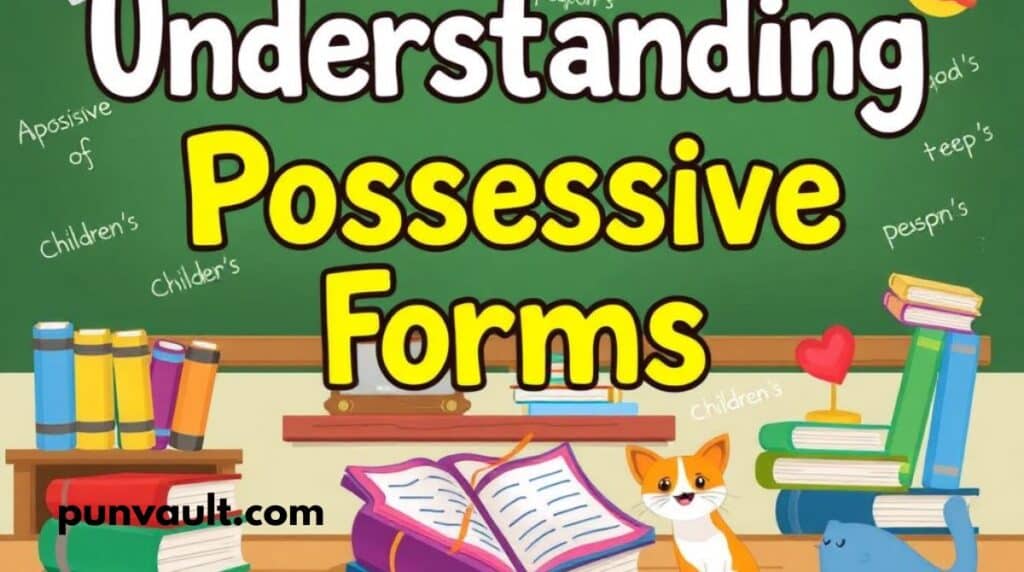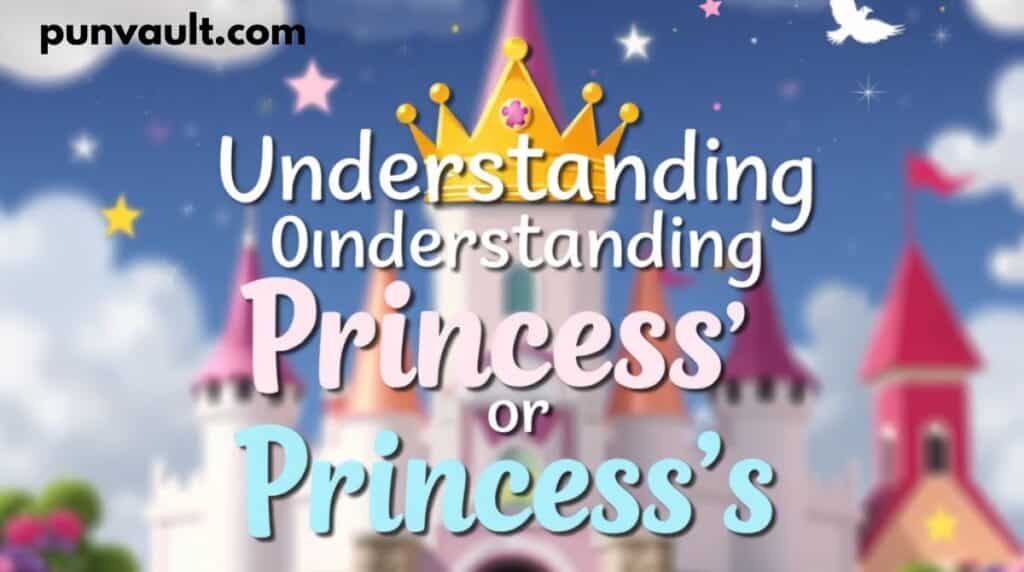When understanding “Princess’ or Princess’s” refers to grasping the correct grammatical usage of possessive forms when dealing with a singular noun that ends in “s.” Specifically, it involves knowing whether to write “princess’” or “princess’s” to show ownership. This rule of punctuation may seem minor, but it plays a significant role in clarity, precision, and fluency in writing. The distinction helps avoid ambiguity, especially in formal or academic contexts, where grammar standards are more rigid.
In a world where digital communication is king, grammar is often overlooked—but not by sharp-eyed readers and professionals. The proper use of possessives reflects a strong command of language and can elevate even the simplest sentence. It’s the kind of detail that distinguishes polished writing from the rest. Whether you’re writing a fairy tale, blog, or business proposal, mastering these rules makes your language more professional and refined.
Understanding the choice between “princess” and “princess’s” is more than a grammatical technicality—it reflects evolving usage standards in modern English. Different style guides, such as AP and Chicago, sometimes offer differing rules, which can confuse even seasoned writers. By learning the logic and exceptions behind these possessives, you not only gain confidence but also ensure your writing meets the expectations of any audience.
Singular and Plural Refresher
Before diving into possessives, it’s essential to understand the singular and plural forms of a noun. This is the foundation for using possessive apostrophes correctly.
Singular Form
A singular noun refers to just one person, thing, or idea. For example:
- Princess (one princess)
Plural Form
A plural noun refers to more than one of the same thing. You form the plural of “princess” by adding -es, since the word ends in -s. For example:
- Princesses (more than one princess)
Now that we’ve covered singular and plural forms, let’s look at how possessive apostrophes work for each.
Understanding Possessive Forms

A possessive form indicates ownership. We use apostrophes to show that something belongs to someone or something else.
For example, if a princess owns a crown, we say:
- The princess’s crown (singular possessive)
If multiple princesses own crowns, we say:
- The princesses’ crowns (plural possessive)
READ ALSO:180+ Gut-Busting Digestive System Puns to Tickle Your Funny Bone
Singular Possessive: “Princess’s”
Rule for Singular Possessive
In general, to form the singular possessive of a noun, you add’s, regardless of whether the noun ends in -s. This rule applies to most English words, including proper names like Princess.
Example:
- The princess’s tiara sparkled in the sunlight.
- The princess’s horse was the fastest in the kingdom.
This rule holds true for most singular nouns ending in -s. Although there are exceptions (such as in certain style guides), the Chicago Manual of Style and the APA Style both recommend adding the’s in these cases.
Plural Possessive: “Princesses’”
Rule for Plural Possessive
When you’re dealing with plural nouns that already end in -s, you only need to add an apostrophe—no extra “s”.
Since princesses is the plural form of princess, we make it possessive by adding the apostrophe after the s:
READ MORE: Coach’s or Coaches’ or Coaches? Understanding the Differences
Example:
- The princesses’ gowns were elegant and colorful.
- The princesses’ advisors gave them valuable counsel.
This is the same rule you follow for other plural nouns that end in -s, like dogs’, cats’, and teachers’.
Why Apostrophe Placement Matters

The placement of an apostrophe can change the meaning of a sentence entirely. For example, let’s compare the following two sentences:
- The princess’s crown refers to the crown owned by one princess.
- The princess’s crown refers to a crown that belongs to multiple princesses.
Understanding how the apostrophe rules work helps you avoid misunderstandings and communicate clearly.
Common Misconception: “Princess”
Many people wonder if it’s ever correct to use princess’ without the extra s at the end. Some style guides, like the Associated Press (AP) Stylebook, suggest using just the apostrophe without the -s when the noun ends in -s. So, it’s acceptable in AP style to write princess instead of princess’s.
However, most other style guides, including the Chicago Manual of Style, recommend adding the’s for consistency in spelling and clarity.
Real-World Examples

Let’s break down some real-world applications to understand how possessive forms are used in various contexts.
A. In Everyday Writing
In casual writing, like books, articles, or blogs, the singular possessive is used to indicate ownership of something by a single entity.
Example:
- The princess’s gown was embroidered with silver thread.
For plural nouns, the possessive form is used when something belongs to more than one entity.
Example:
- The princesses’ gowns were made of velvet and silk.
B. In Professional and Formal Communication
Correct grammar and punctuation are especially crucial in professional or formal writing, where clarity and precision are essential.
Email Communication
In a professional email, you’d want to ensure your possessive forms are spot on to convey authority and professionalism.
Example (singular possessive):
- “I look forward to receiving the princess’s response.”
Example (plural possessive):
- “Please send me the princesses’ feedback by Friday.”
Social Media Posts
Even in the informal world of social media, proper grammar shows professionalism and respect for your audience.
Example (singular possessive):
- “Here’s the princess’s official statement on the matter.”
Example (plural possessive):
- “Check out the princesses’ stunning outfits at today’s event!”
Quick Reference Table: Singular vs. Plural Possessive Forms
To make the rules easier to follow, here’s a quick reference table for possessive forms of “princess”:
| Form | Usage | Example |
|---|---|---|
| Princess | Singular noun | The princess is attending the gala. |
| Princesses | Plural noun | The princesses were seen in the market. |
| Princess’s | Singular possessive | The princess’s crown is beautiful. |
| Princesses’ | Plural possessive | The princesses’ gowns were exquisite. |
Common Mistakes to Avoid
Many writers struggle with the correct placement of apostrophes in possessive nouns. Here are some common grammar mistakes to watch out for:
- Omitting the apostrophe: “The princess’s dresses were elegant” (incorrect)
- Inconsistent style: Switching between princesses and princesses within the same text
- Confusing plural with possessive: “The princess’s arrived” (incorrect, should be “The princesses arrived”)
Style Guide Comparisons
Different style guides may have slightly varying rules on possessive apostrophes. Here’s a quick comparison of two prominent guides:
| Style Guide | Rule for Singular Possessive | Rule for Plural Possessive |
|---|---|---|
| Chicago Manual of Style | Princess’s (adds) | Princesses’ (add apostrophe only) |
| AP Stylebook | Princess’s (add s) | Princesses’ (apostrophe only) |
When in doubt, it’s important to follow the style guide that aligns with the type of writing you’re doing.
Why Mastering Possessives Matters
Mastering possessive grammar is essential for several reasons:
Clarity and Precision
Using the correct possessive forms ensures that your writing is clear and precise. Misplaced apostrophes can confuse your readers, making your writing seem less professional.
Professionalism in Writing
In professional settings, correct grammar is a mark of respect. Whether you’re writing an email to a colleague, a social media post, or a formal report, proper apostrophe usage demonstrates that you care about accuracy.
Adhering to Editorial Standards
Following editorial standards is crucial for consistency in writing. Whether it’s the Chicago Manual of Style or the AP Stylebook, each style guide offers guidelines for keeping your writing sharp, clear, and error-free.
Tips for Mastering Possessive Grammar
Here are some practical tips to help you master possessive grammar:
- Read your sentences out loud to check for clarity. Does the apostrophe placement make sense?
- Double-check your style guide. Whether you’re using the Chicago Manual of Style or AP Style, stick to one style guide for consistency.
- Practice with examples: The more you practice writing possessives, the easier it will be to apply the rules without thinking twice.
- Use grammar tools like Grammarly to check for apostrophe errors.
Conclusion
In conclusion, understanding “Princess’ or Princess’s” helps you write correctly and clearly. It shows that you know how to use possessive forms the right way. This small grammar rule can make a big difference in your writing. It helps avoid confusion and keeps your sentences smooth and professional.
Whether you’re writing stories, essays, or emails, Understanding “Princess’ or Princess’s” makes your work look better and more polished. Understanding “Princess’ or Princess’s” also shows respect for grammar and language rules. By learning and using these rules, you become a better writer. Keep practicing, and using the correct form will soon become easy.
FAQS
When should I use “princess’s” vs. “princess’?
Use “princess’s” for singular possession in modern usage—e.g., “the princess’s crown.” “Princess” is less common, typically in British or AP Style when the next word starts with.
Is “princesses” always the correct plural possessive?
Yes—when referring to multiple princesses, use “princesses’” (e.g., “the princesses’ gowns”). Understanding Princess’s
Why do style guides differ on this rule?
American English and guides like Chicago favor adding ’s even to singular nouns ending in “s.” AP Style allows dropping the extra “s” before another “s” sound.
Does pronunciation matter in writing rules?
Some people prefer “princess” for smoother pronunciation, but written English prioritizes consistency and clarity—hence, “princess’s” is usually preferred.
Is this rule changing in modern English?
The trend shows “princess’s” becoming the global standard for the singular possessive. Although alternate forms persist, “princess’s” is dominant in recent guidanceSingular vs Plural Possessive

Carlos Wise is the undisputed king of comebacks and the master of roast-worthy wit. With a sharp tongue and a sharper sense of humor, he crafts savage one-liners and hilarious insults that leave no mic un-dropped. When he’s not penning legendary burns, Carlos is busy decoding the art of sarcasm and turning everyday moments into comedy gold. If you’re looking for a laugh with bite, Carlos delivers every time.







